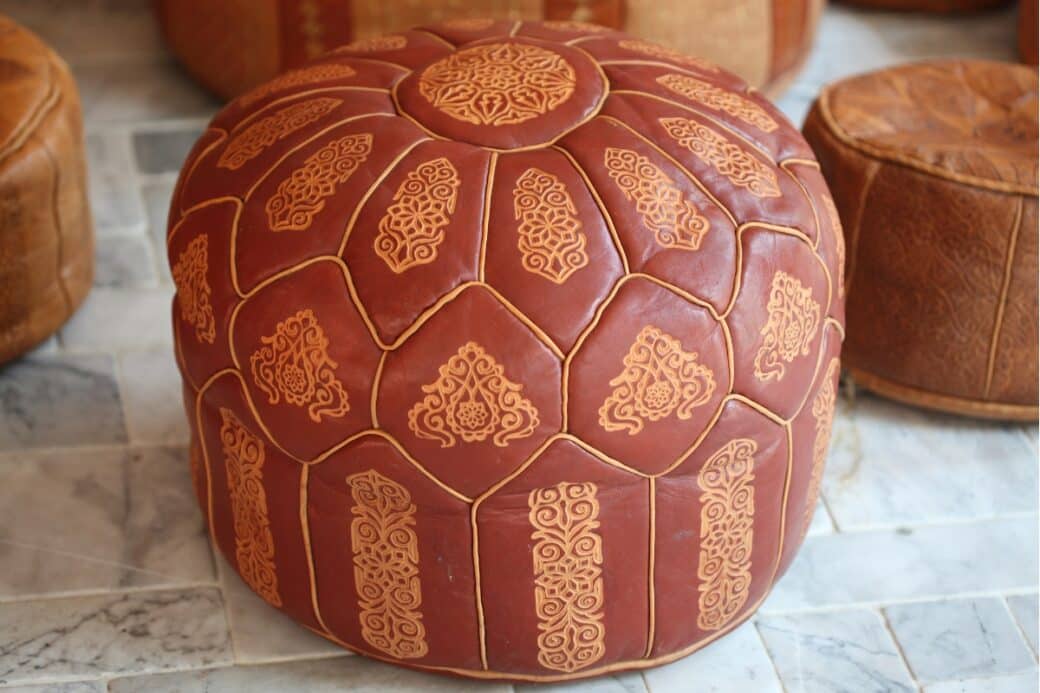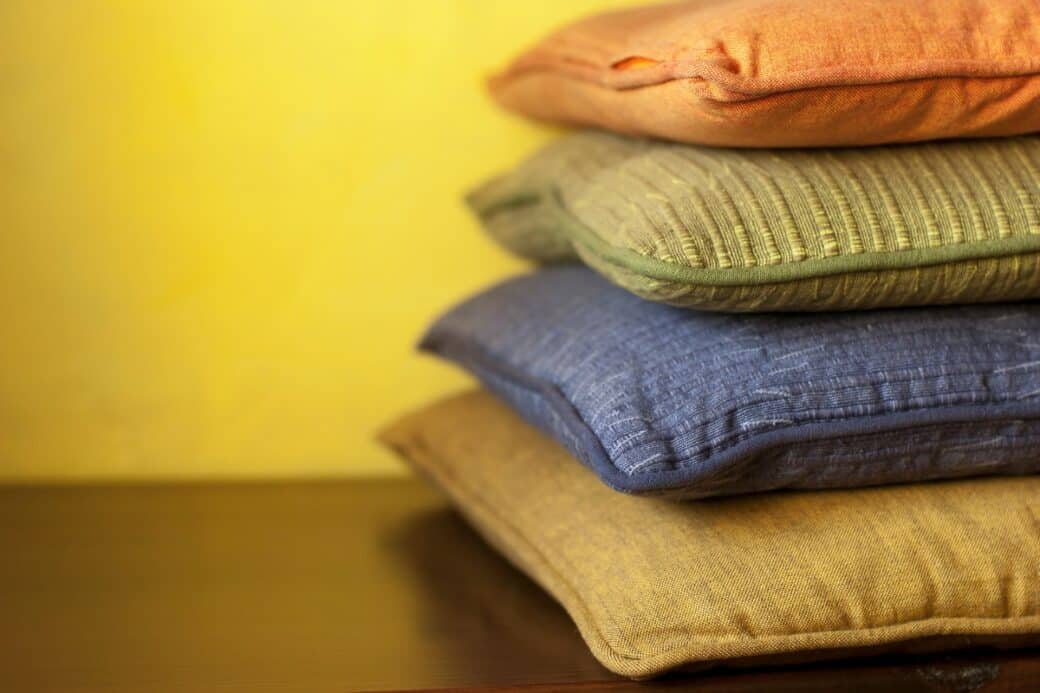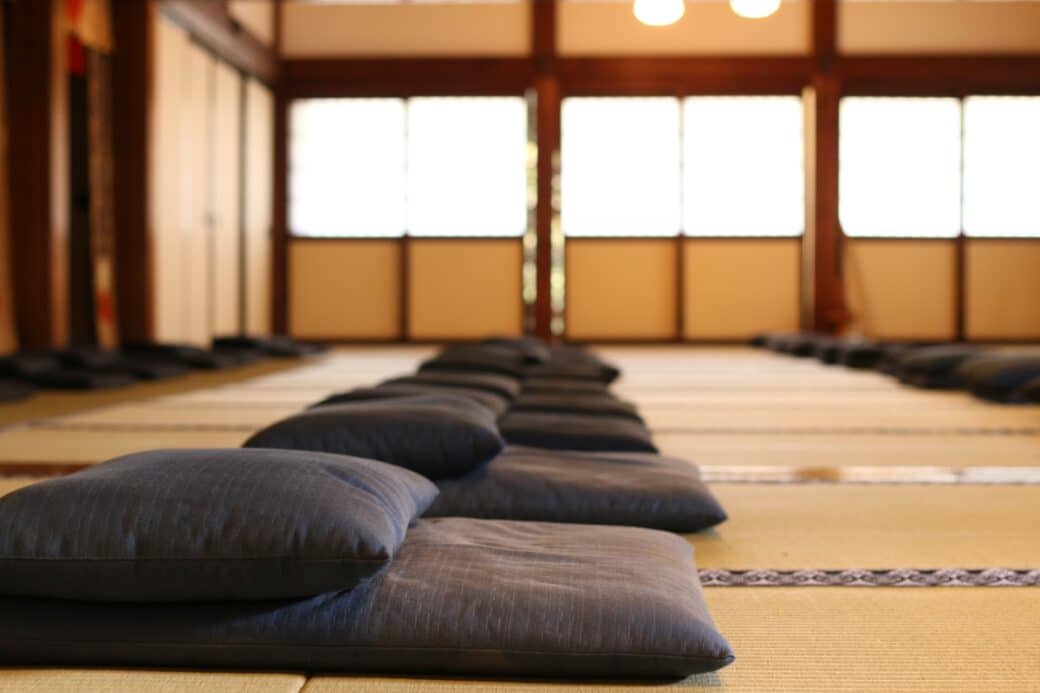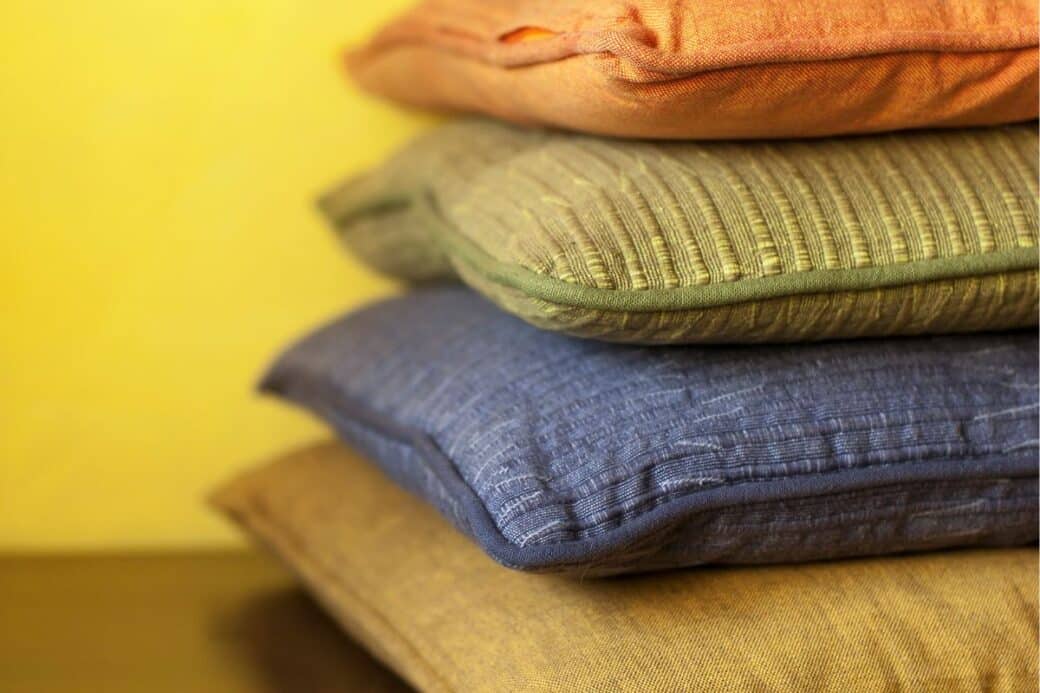Are you in search of the perfect meditation cushion pattern? Look no further! In this article, we will guide you through the process of finding the ideal cushion pattern that suits your unique meditation needs. From selecting the right materials to understanding the different styles and sizes available, we’ve got you covered. Whether you are a beginner or an experienced meditator, finding the perfect fit for your meditation practice is essential for comfort and support. So sit back, relax, and let’s explore the world of meditation cushion patterns together!

Meditation Cushion Pattern: Understanding Meditation Cushions
Meditation cushions have been used for centuries as aids to create a comfortable and supported meditation practice. These special cushions play a crucial role in helping individuals maintain proper posture and focus during their meditation sessions. Understanding the history and purpose of meditation cushions, as well as the different types and materials used, can help you choose the perfect cushion for your practice.
History and Purpose of Meditation Cushions
Meditation cushions have deep roots in ancient Eastern practices, particularly in Buddhism. They were traditionally used by monks and practitioners to sit for long periods of meditation, providing both comfort and stability. The purpose of these cushions is to create a supportive foundation for the meditator, allowing them to maintain an upright posture and prevent discomfort or distraction during their practice. Over time, meditation cushions have evolved and become more accessible to people around the world, regardless of their spiritual or religious beliefs.
Different Types of Meditation Cushions
There are various types of meditation cushions available, each designed to cater to different meditators’ needs and preferences. The most common types include zafu cushions, zabuton cushions, and crescent-shaped cushions. Zafu cushions are round and typically filled with buckwheat hulls or kapok fiber, providing firm but comfortable support for the hips and buttocks. Zabuton cushions, on the other hand, are rectangular and larger in size. They are often used in combination with a zafu cushion to provide cushioning and support for the knees and ankles. Crescent-shaped cushions offer a unique alternative, providing a gentle slope that can help alleviate pressure on the lower back and promote proper spinal alignment.
Materials Used for Meditation Cushions
Meditation cushions can be made from a variety of materials, with each offering different levels of comfort and durability. Common materials used for cushion covers include cotton, linen, silk, and synthetic blends. These fabrics range in texture and breathability, allowing individuals to choose the one that suits their preferences. When it comes to filling, buckwheat hulls, kapok fiber, and cotton batting are commonly used. Buckwheat hulls offer a firm yet supportive feel, molding to the body’s contours. Kapok fiber, a natural plant-based material, provides a similar level of support with a softer touch. Cotton batting offers a more plush and cushiony feel, perfect for those seeking additional comfort during meditation.
Why Customize your Cushion Pattern
While standard meditation cushions can provide the necessary support for your practice, customizing your cushion pattern can bring a multitude of benefits. By choosing a pattern that resonates with your personal style and preferences, you can enhance your overall meditation experience and make it a truly unique and personal journey.
Benefits of Custom Meditation Cushion Patterns
Custom meditation cushion patterns allow you to express your individuality and create a meditation space that reflects your personality. By choosing fabrics, colors, and designs that you find aesthetically pleasing, you can create an environment that promotes relaxation and tranquility. Additionally, having a custom cushion can instill a sense of ownership and commitment to your meditation practice, as it becomes a special item that holds personal significance.
How Custom Patterns Reflect Personal Style
Your meditation cushion pattern can be a reflection of your personal style, interests, and beliefs. Whether you prefer bold and vibrant colors, serene and calming patterns, or intricate designs, customizing your cushion allows you to showcase your unique taste. It can also serve as a reminder of your intentions and goals during meditation, providing a visual anchor for your practice.

Determining the Ideal Size and Shape
Choosing the right size and shape for your meditation cushion is crucial for maintaining comfort and proper alignment during your practice. Understanding standard options and considering your individual needs can help you find the perfect fit.
Standard Sizes of Meditation Cushions
Meditation cushions come in various sizes, allowing individuals to find the one that suits their body type and preference. Zafu cushions typically have a diameter of around 14 to 16 inches, offering ample space to support the hips and provide stability. Zabuton cushions, being rectangular, range in size, but a common dimension is around 30 inches in length by 28 inches in width, providing sufficient room for the knees and ankles. Crescent-shaped cushions can vary in size but generally offer similar support to zafu cushions while prioritizing the lower back.
Ideal Shapes for Comfort and Support
The ideal shape of your meditation cushion depends on your specific needs and comfort preferences. Zafu cushions, with their round shape, promote proper spinal alignment by tilting the pelvis forward, while still providing support to the hips and buttocks. Zabuton cushions, being rectangular and larger in size, offer cushioning and support for a wider range of sitting positions, accommodating various body types. Crescent-shaped cushions are designed specifically to alleviate pressure on the lower back, making them an excellent choice for individuals with lower back pain or discomfort.
Choosing the Right Fabric
The fabric used for your meditation cushion plays a vital role in both its comfort and durability. Understanding different fabric types and considering factors such as texture, breathability, and maintenance can help you make an informed decision.
Understanding Different Fabric Types
Cotton is a popular choice for meditation cushion covers as it is soft, breathable, and hypoallergenic. It offers a natural feel against the skin and allows for better air circulation, keeping you cool during longer meditation sessions. Linen, a fabric made from flax fibers, is highly durable and has excellent moisture-wicking properties, making it a great option for those who may sweat during their practice. Silk, known for its luxurious feel, offers a smooth and lustrous surface that can elevate the visual appeal of your cushion. Synthetic blends, such as polyester or nylon, can provide additional durability and resistance to wear and tear.
Pros and Cons of Various Fabrics
Each fabric choice has its own set of pros and cons. Cotton, being natural and breathable, is generally comfortable and easy to care for. However, it may wrinkle easily and could require more frequent washing. Linen, although durable, can be rougher in texture compared to cotton and may require more initial breaking in for optimal comfort. Silk offers a luxurious feel and adds an elegant touch to your meditation space, but it may be more delicate and require special care. Synthetic blends, while durable and resistant, may not offer the same level of breathability or natural feel as cotton or linen.
Choosing a Fabric Based on Use
Consider your meditation practice and how often you will be using the cushion when choosing the fabric. If you plan to meditate daily or have longer meditation sessions, it’s important to choose a fabric that is comfortable, breathable, and easy to clean. Cotton or linen may be the ideal choices in these scenarios. However, if your cushion will primarily be for decorative purposes or occasional use, you may prioritize the visual appeal and opt for silk or a synthetic blend.

Designing the Cushion Pattern
Designing your own cushion pattern allows you to bring your creative vision to life and create a cushion that is truly unique to you. By following a few steps and having the right tools, you can create a pattern that perfectly suits your style and preferences.
Steps in Creating a Cushion Pattern
- Measure the dimensions of your desired cushion size, considering the diameter or length and width.
- Determine the shape of your cushion, whether it’s round, rectangular, or crescent-shaped.
- Sketch out your pattern on paper, ensuring the measurements are accurate and proportional.
- Cut out the pattern template based on your sketch.
- Make a muslin prototype using your pattern to test the fit and make any necessary adjustments.
- Once satisfied with the prototype, transfer the pattern onto your chosen fabric using fabric chalk or a fabric marker.
- Cut the fabric pieces according to the pattern.
- If desired, add any additional design elements such as piping, embroidery, or embellishments.
Tools Needed for Design
To create your own cushion pattern, you will need a few essential tools:
- Measuring tape – for accurately measuring the dimensions of your desired cushion size.
- Paper and pencil – for sketching out the pattern before transferring it to the fabric.
- Scissors – for cutting the paper pattern template and the fabric pieces.
- Fabric chalk or fabric marker – for transferring the pattern onto your chosen fabric.
- Sewing machine – for sewing the fabric pieces together.
Sewing the Cushion
Once you have your cushion pattern ready, it’s time to bring it to life by sewing the fabric pieces together. Following a detailed step-by-step guide and incorporating some useful tips can help ensure a successful sewing experience.
Detailed Step-by-Step Guide to Sewing
- Lay out your fabric pieces, right sides together, according to your pattern.
- Pin the pieces together along the edges, leaving a small opening for turning and filling.
- Using a sewing machine, stitch the pinned edges together, ensuring to remove the pins as you sew.
- Reinforce the seams by backstitching at the beginning and end of each seam.
- Trim any excess fabric and corners for a neater finish.
- Turn the cushion cover right side out through the opening.
- Press the seams with an iron to create crisp and smooth edges.
- Fill the cushion with the chosen filling material (covered in the next section).
- Hand stitch the opening closed using a ladder stitch or slip stitch.
- Give the cushion cover a final press with the iron to remove any wrinkles.
Tips to Perfect Sewing
- Take your time and go slowly, especially if you’re new to sewing. This will help ensure precise stitching and a professional-looking finish.
- Use the appropriate sewing machine settings and a suitable needle for your fabric type to prevent any damage or breakage.
- Backstitch at the beginning and end of each seam to reinforce the stitches and prevent them from unraveling over time.
- Trim the excess fabric and corners before turning the cover right side out. This will reduce bulk and help achieve clean and crisp edges.
- Press the seams with an iron after turning the cover right side out to eliminate any wrinkles and enhance the overall appearance of the cushion.

Filling the Cushion
Choosing the right filling material for your meditation cushion is essential for providing optimal comfort and support. Consider your personal preferences, budget, and desired level of firmness when selecting the right filling option.
Choosing the Right Filling Material
There are several filling materials commonly used in meditation cushions, each offering unique properties and benefits. Some popular options include buckwheat hulls, kapok fiber, and cotton batting. Buckwheat hulls, being natural and environmentally friendly, mold well to the body’s shape and provide firm support. Kapok fiber, derived from the seeds of the kapok tree, is soft and hypoallergenic, making it a great choice for individuals with sensitivities. Cotton batting offers a plush and cushiony feel, perfect for those seeking extra comfort during their practice.
How to Properly Fill Your Cushion
To properly fill your meditation cushion, follow these steps:
- Ensure your cushion cover is inside out and the opening is easily accessible.
- Slowly pour or spoon in the filling material, starting with a small amount.
- As you add the filling, periodically pat and shake the cushion to distribute it evenly.
- Continue filling until you achieve your desired level of firmness and support.
- Avoid overfilling, as this may make the cushion too firm or uncomfortable.
- Once filled, carefully hand stitch the opening closed using a ladder stitch or slip stitch.
Maintaining Your Meditation Cushion
To keep your meditation cushion in prime condition and prolong its lifespan, regular cleaning and maintenance are necessary. Consider the following tips to ensure your cushion stays fresh and retains its pattern integrity.
Tips for Regular Cleaning and Care
- Spot cleaning: If there are any spills or stains on your cushion, promptly blot them with a clean cloth or paper towel. Avoid rubbing the stain, as it may push it deeper into the fabric.
- Dry cleaning: Some fabric types, such as silk or delicate synthetic blends, may require professional dry cleaning. Refer to the fabric care instructions or consult a professional cleaner for guidance.
- Gentle machine washing: For cotton or linen cushion covers, check if they are machine washable. If so, use a gentle cycle with cold water and mild detergent. Avoid using bleach or harsh chemicals that may damage the fabric.
- Air drying: After washing, allow the cushion cover to air dry completely. Avoid using a dryer, as high heat may shrink or distort the fabric.
- Regular maintenance: Fluff and reshape the cushion periodically to ensure the filling remains evenly distributed and comfortable.
How to Maintain the Cushion Pattern Integrity
To maintain the pattern integrity of your meditation cushion:
- Avoid exposing the cushion to direct sunlight for extended periods, as it may cause fading or discoloration.
- Use a fabric protectant spray or cover the cushion when not in use to minimize dust accumulation and prevent potential staining.
- Handle the cushion with clean hands to prevent oils, residues, or dirt from transferring onto the fabric.
- Store the cushion in a clean and dry place when not in use to protect it from damage or moisture.
Troubleshooting Common Issues
While meditation cushions are designed to withstand regular use, occasional issues may arise. Understanding how to troubleshoot common sewing issues, as well as how to address wear and tear, can help you maintain the longevity and functionality of your cushion.
Solving Common Sewing Issues
- Uneven stitching: If you notice uneven stitches or gaps in your seams, double-check your sewing machine settings and make sure the fabric is lying flat and properly aligned. Adjusting the tension or using a walking foot attachment can help achieve more even stitches.
- Squeaky filling: Over time, certain filling materials such as buckwheat hulls may start to squeak or make noise when compressed. To reduce or eliminate the noise, consider adding a liner made of muslin or a similar fabric to encase the filling.
- Loose threads: Trim any loose threads or stray fibers to prevent them from unraveling further. Use sharp scissors to ensure clean cuts without damaging the fabric.
Addressing Wear and Tear
With regular use, wear and tear can occur on your meditation cushion. Here are a few steps to address common issues:
- Faded fabric: If the fabric begins to fade over time, consider using fabric dye or fabric paint to restore its vibrancy. Follow the manufacturer’s instructions for the specific product you choose.
- Worn-out seams: If the seams start to weaken or come apart, reinforce them with additional stitching using a sewing machine or sew them by hand with a strong thread.
- Pilling fabric: If the fabric develops small balls of fibers, known as pills, carefully remove them using a fabric shaver or a fabric comb. Be gentle to avoid damaging the fabric.
Refresh or Replace? When to Make a New Cushion
While maintenance can help extend the life of your meditation cushion, there may come a time when it’s best to make a new one. Consider the following factors when deciding whether to refresh or replace your cushion:
- Significant damage: If the cushion has extensive damage, such as large tears or irreparable stains, it may be more practical to start fresh with a new cushion.
- Loss of shape or support: If the filling material has lost its original shape or no longer provides the necessary support, it may be time for a replacement.
- Style update: If you’re looking to update your meditation space or simply want a change of scenery, creating a new cushion with a different pattern or design can breathe new life into your practice.
Inspiring Cushion Patterns and Styles
Finding inspiration for your meditation cushion pattern can be exciting and enjoyable. There are countless options available, ranging from serene and calming patterns to bold and vibrant designs. Consider exploring popular meditation cushion patterns and experimenting with different color schemes and themes to create a cushion that resonates with you.
Popular Meditation Cushion Patterns
- Lotus flower: Symbolizing purity and enlightenment, the lotus flower pattern is often associated with meditation and spirituality. It can add a touch of elegance and tranquility to your meditation space.
- Mandala: Intricate and symmetrical, mandala patterns represent the universe and balance. Incorporating a mandala pattern into your cushion design can help create a focal point for your meditation practice.
- Nature-inspired: Drawing inspiration from the natural world, patterns featuring leaves, trees, or animals can evoke a sense of grounding and connection to the earth during meditation.
- Abstract: Abstract patterns offer a more contemporary and artistic touch to your cushion. They can symbolize the fluidity of the mind and allow for individual interpretation.
Exploring Color Schemes and Themes
Color plays a significant role in setting the mood and atmosphere of your meditation space. Consider the following color schemes and themes to enhance your cushion pattern:
- Earth tones: Using hues inspired by nature, such as shades of green, brown, and neutral tones, can create a calming and grounding environment.
- Jewel tones: Vibrant and deep hues, such as emerald green, sapphire blue, or ruby red, can add a sense of richness and opulence to your cushion design.
- Pastel shades: Soft and delicate colors, including blush pink, baby blue, or lavender, can create a soothing and gentle ambiance.
- Monochromatic: Sticking to a single color but varying its shades and tones can create a harmonious and balanced cushion design.
With endless possibilities for customization, you can create a meditation cushion that not only supports your practice but also reflects your unique style and personality. Whether it’s through choosing the right cushion size, selecting the perfect fabric, designing your pattern, or maintaining its durability, your cushion can become a cherished companion on your meditation journey. So why settle for a standard cushion when you can embrace the opportunity to find the perfect fit and create a cushion that speaks to your soul? Embrace the creativity and explore the world of meditation cushion patterns – your cushion awaits!




